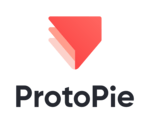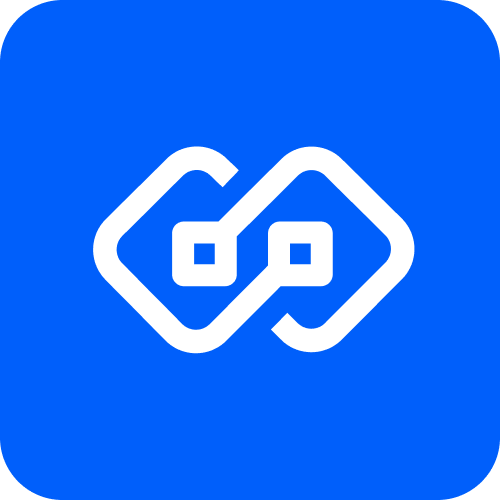What Is Prototyping Software?
Prototyping software is a powerful tool that allows developers and designers to generate functioning and interactive models of their projects before moving on to the finished product. It enables users to visualize their ideas, test them, and collect feedback before devoting time and resources to the actual creation phase. To put it simply, prototyping software is a digital counterpart of a physical prototype that provides a realistic representation of the finished product.
It enables quick iteration and validation of concepts, resulting in speedier and more efficient development. This software is essential in today's fast-paced market, when being the first to launch a successful product might mean the difference. One of the advantages of prototype software is its user-friendly interface, which makes it accessible to both technical and non-technical users.
It does not require coding expertise and allows you to easily develop prototypes of any complexity. This characteristic makes it an ideal platform for cooperation among many teams, including designers, developers, and stakeholders. It's also worth noting that prototype software has a diverse set of capabilities, making it appropriate for a variety of industries and applications.
This program can meet all of your prototyping needs, from mobile app development to website design, product creation, and user testing. When choosing prototype software, look for features like drag-and-drop capabilities, dynamic animations, and the flexibility to test across many platforms. You may also wish to consider user reviews, which can provide information about the software's usability and performance.
What Are The Recent Trends In Prototyping Software?
In recent years, the prototyping software market has experienced a spike in technological improvements and adjustments. These changes have had a tremendous impact on the features and capabilities of prototyping software, making it a valuable tool for both enterprises and individuals. One of the most noticeable trends in prototype software is the move to cloud-based systems.
As more firms transition to remote work, having a cloud-based prototype tool has become critical. These platforms enable numerous team members to work on a project at the same time, regardless of their physical location. Another trend is to incorporate artificial intelligence (AI) and machine learning (ML) into prototype software. This technology allows designers to develop interactive prototypes that imitate user behavior, making them more realistic and useful throughout the testing phase.
Furthermore, the rise of low-code and no-code prototyping technologies has made prototype creation more accessible. These technologies minimize the need for considerable coding knowledge, allowing designers with little technical skills to generate prototypes fast and efficiently. Another notable trend is the incorporation of design and development capabilities into prototyping software itself.
This integration enables a seamless handoff between designers and developers, increasing the overall efficiency and speed of the prototyping process. Finally, there has been a shift from traditional wireframing and mockup tools to more complex prototyping tools that provide a comprehensive approach. These tools incorporate design, prototyping, and testing components, providing a one-stop shop for all stages of the product development process.
Benefits Of Using Prototyping Software
Prototyping software is a powerful tool that allows designers, developers, and product teams to quickly and easily build interactive mockups of their ideas. It enables the construction of visual representations of a product or application, which can then be tested, gathered feedback on, and improved overall design and functioning.
Let's explore, we'll look at the primary advantages of using prototype software and how it might help your product development process.
1. Improved Communication And Collaboration: Prototyping software facilitates clear and effective communication between team members, stakeholders, and clients. Its visual and participatory nature allows everyone to simply comprehend the design and provide input. This encourages collaboration and guarantees that everyone involved is on the same page, resulting in a speedier and more efficient design process.
2. Faster Iterations And Changes: One of the primary benefits of prototype software is the ability to swiftly make changes and iterate on designs. It eliminates the need for time-consuming manual adjustments and updates, allowing designers to explore and fine-tune their designs on the fly. This leads to a shorter development period and faster delivery of high-quality products.
3. User Testing And Feedback: Prototyping software enables user testing and feedback at an early stage of the design process. This allows designers to obtain crucial information and make essential changes before the product is fully built. Incorporating customer feedback into the design raises the likelihood of producing a user-friendly and successful product.
4. Cost Savings: Making adjustments and upgrades to traditional product development may be costly and time-consuming, particularly in the later phases. Prototyping software allows for quick and low-cost changes and iterations. This reduces the likelihood of expensive redesigns and total development expenses.
5. Visualization Of Ideas: Prototyping software generates a visual depiction of an idea, making it easier to communicate and sell to stakeholders and clients. This helps to acquire funds, gain decision-makers' support, and ensure that the final product fulfills the initial goal.
6. Seamless Interface With Development Tools: Many prototyping software packages have seamless interface with development tools, making it easier for designers and developers to collaborate. This guarantees that the final result is consistent with the design and reduces the likelihood of miscommunication or inconsistency.
Important Factors To Consider While Purchasing Prototyping Software?
When it comes to choosing prototyping software, there are a few key elements to consider in order to make an informed purchase that will benefit your company or project.
Here are the essential factors to consider while comparing various prototyping options:
1. User-Friendliness: The software should be simple to use, especially for those who are not technically inclined. Look for alternatives with a clear and intuitive design, as well as drag-and-drop functionality that allows you to construct prototypes fast and easily.
2. Compatibility: Before making a purchase, ensure that the program is compatible with the devices and operating systems you plan to use. This is especially critical if your team is working on many devices or if you intend to share prototypes with clients or stakeholders.
3. Customization Options: A decent prototyping program should enable you to customize your prototypes to meet your individual needs and specifications. Look for adjustable layouts, design element libraries, and the option to incorporate your own branding.
4. Collaboration Features: If you'll be working with a team, look into software that has collaboration options. This can feature real-time editing, commenting, and version control, making it easier for team members to collaborate on a single prototype.
5. Integration With Other Tools: Because prototyping is only one step in the design process, it is critical to assess how well the software connects with any other tools or applications you may be utilizing. This may include design tools, project management software, or development tools.
6. Cost: While cost should not be the sole element in your decision-making process, it is crucial to assess the software's pricing and whether it is within your budget. Some options include free trials or versions with limited features, so try them before committing to a purchase.
7. Assistance And Resources: Choose software that provides adequate customer assistance and resources, such as tutorials, webinars, and user communities. This will be useful if you run into any problems or have questions when using the app.
By keeping these elements in mind, you can make an informed decision when selecting prototyping software that meets your requirements and allows you to produce powerful and successful prototypes.
What Are The Key Features To Look For In Prototyping Software?
When looking for prototype software, there are a few crucial elements that are required for a seamless and effective prototyping experience. As a buyer, you must understand these features in order to make an informed decision and select the appropriate software for your requirements.
The following are the important things to look for in prototyping software:
1. User-Friendly Interface: One of the most crucial aspects of prototype software is its user-friendly interface. It should be intuitive and simple to use, especially for non-technical consumers. This will help you save time and increase productivity during the prototype process.
2. Drag-And-Drop Functionality: The program should allow you to simply add and rearrange objects on the prototype. This enables rapid and easy alterations, making the prototyping process more efficient.
3. High-Fidelity Prototyping: Look for software that supports high-fidelity prototypes, which closely mirror the final product in terms of design and functionality. This will provide you with a more accurate portrayal of the eventual outcome and allow you to discover any potential concerns early on.
4. Integration With Design Tools: The ability to integrate with design tools such as Sketch or Adobe XD is critical for smooth communication between designers and developers. This provides for a more efficient workflow and guarantees that the finished product adheres to the original design.
5. Input And Collaboration Features: Look for software that allows you to provide input and collaborate. This might include the option to provide comments, annotate designs, and share prototypes with team members for feedback. This promotes teamwork and communication within the team.
6. Interactive Animations And Movements: A decent prototyping tool should support interactive animations and motions like clicks, swipes, and scrolling. This enables a more realistic and dynamic prototype, resulting in a greater knowledge of the user experience.
7. Cross-Platform Compatibility: Select software that works on numerous platforms, such as desktop, mobile, and web. This will allow you to test your prototype on a variety of devices while ensuring a consistent user experience.
8. Team Management Capabilities: If you operate with a team, it is critical to select software that includes team management features. Version control, user permissions, and project tracking may all be used to keep the project organized and on schedule.
By keeping these essential qualities in mind, you can safely choose prototyping software that fulfills your individual requirements and allows you to build high-quality prototypes for your projects. When making your decision, remember to examine pricing, customer support, and user reviews. With the appropriate prototype tools, you can simplify the design process and bring your ideas to life quickly.
Why Do Businesses Need Prototyping Software?
Prototyping software is a vital tool for firms who want to innovate and build new products.
Here are the main reasons why firms use prototyping software:
1. Saves Time And Money: Prototyping software enables organizations to quickly and affordably build a visual representation of their product ideas. This saves time and costs by eliminating the need for manual mockups and physical prototypes, both of which may be time-consuming and costly.
2. Enables Collaboration: Prototyping software allows firms to effortlessly communicate and exchange ideas across teams and departments. This ensures that all stakeholders are on the same page and that any modifications or updates are communicated clearly, resulting in a more efficient and streamlined development process.
3. Identifies Design Flaws Early: Prototyping software enables organizations to test and develop product design concepts before devoting major resources to manufacturing. This helps to discover any defects or design difficulties early on, lowering the likelihood of costly mistakes later on.
4. Improves User Experience: By generating interactive prototypes, businesses may gather vital input from potential customers and make required changes to their product designs. This results in a better user experience, which leads to increased customer satisfaction and loyalty.
5. Accelerates Product Development: Prototyping software allows organizations to swiftly iterate and make changes to their product design based on user feedback. This accelerates the product development process, helping businesses to get their products to market faster and stay ahead of the competition.
6. Reduces Development Risks: Prototyping software lowers the risk of creating goods that do not satisfy customer requirements. Businesses can reduce the risk of failure by testing and improving product designs early on, ensuring that they are producing a product that satisfies the needs and desires of their target audience.
How Much Time Is Required To Implement Prototyping Software?
When it comes to implementing prototyping software, a few elements can influence the timetable. The software you use, the complexity of your project, and the expertise level of your team all influence how much time is necessary for successful implementation. Most prototyping software may be implemented within a few weeks. However, this may differ depending on the size and scope of your project.
For smaller projects with simpler needs, the implementation process can take only a few days. Larger and more sophisticated projects, on the other hand, will naturally take longer to implement. This may necessitate substantial customization and interaction with existing systems, which could take weeks or even months to complete. Additionally, the experience level of your staff can have an impact on the implementation timeline.If your team is familiar with prototype software and has previously used similar tools, they may be able to deploy it faster and more efficiently.
However, if your team is new to prototyping or has minimal technical skills, they may take longer to become familiar with the tools. It's vital to remember that the time required for implementation differs from the time it takes to see results from your prototyping efforts. While implementation may take a few weeks or months, properly refining and iterating on your prototypes to obtain your desired results may require more time.
What Is The Level Of Customization Available In Prototyping Software?
One of the most important factors to consider when choosing prototype software is the level of customization provided. This refers to the capacity to customize the software to your own design requirements and preferences. Different prototyping software solutions provide varying degrees of customization, so it's critical to understand your design objectives and workflow before choosing a tool.
Here are some crucial aspects to consider while selecting customization options:
1. User Interface: Look for software that allows you to personalize the user interface to your design specifications. This could include color schemes, toolbars, and menu layouts.
2. Interactive Features: The ability to customize interactive features like buttons, animations, and transitions can significantly improve the functionality and aesthetics of your prototypes.
3. Design Libraries: Some prototyping software includes pre-designed templates and design libraries that can be changed, giving you a head start on your prototypes while yet allowing for customisation.
4. Code Editing: If you can code, seek for software that lets you customize your prototypes with HTML, CSS, or JavaScript. This amount of freedom can significantly increase the customizing possibilities accessible to you.
5. Collaboration And Feedback: Working with team members and receiving feedback are critical components of the prototype process. Look for software that allows you to personalize the collaboration and feedback capabilities, such as adding comments or highlighting specific parts of the design.
6. Export Choices: Customization choices now include the export of your prototypes. Look for software that can export in a variety of formats, resolutions, and sizes to meet your individual project requirements.
Finally, the level of customisation accessible in prototype software has a significant impact on the quality and efficacy of your designs. When analyzing this element of prototype software, you must carefully analyze your design objectives and preferences in order to choose the tool that best meets your individual demands.
Which Industries Can Benefit The Most From Prototyping Software?
Prototyping software is a useful tool for firms across a variety of industries. Its diverse features provide several advantages, making it an excellent investment for any business wishing to better its product development process.
Let's take a closer look at which industries will gain the most from prototyping software.
1. Product Design And Development Industry: The most obvious industry that can profit from prototype software is product design and development. This software enables designers to quickly and efficiently construct and test prototypes for their products, reducing the time and cost involved with traditional prototyping methods. It also enables easier cooperation between designers and clients, resulting in more accurate and pleasing finished products.
2. Manufacturing Industry: Prototyping software can also be quite useful in the manufacturing business. It allows producers to generate a virtual prototype of their products, making it easier to spot and correct defects or design difficulties before starting the manufacturing process. This leads in a more efficient and cost-effective production process, as well as ensuring that the finished product satisfies all criteria and requirements.
3. Engineering Industry: Prototyping software is also very useful in the engineering business. It enables engineers to test and refine their designs rapidly and precisely before proceeding to the production stage. This lowers the chance of errors and assures that the finished product meets all functional and safety standards, resulting in a more dependable and efficient design process.
4. Car Industry: Prototyping software can also be quite useful in the car industry. This program enables automobile designers to generate and test numerous design iterations, including mechanical, electrical, and software components, prior to entering into production. This leads to a more efficient and cost-effective vehicle design process, decreasing time to market while ensuring high-quality end products.
5. Healthcare Industry: Prototyping software can help the healthcare business, notably with medical device design. It allows medical device manufacturers to produce and test prototypes of their devices, allowing for easy customization and optimization to meet individual patient requirements. This also enables more accurate functionality testing, lowering potential dangers and improving patient safety.
Conclusion
To summarize, prototype software is a significant resource for designers, developers, and organizations seeking to streamline their product development process. This software saves time, money, and resources by allowing for the quick and efficient construction of interactive prototypes, as well as presenting a visual representation of the eventual result.
Before selecting a purchase, you should analyze your team's and project's specific requirements, as well as the features and capabilities of several prototype software solutions. Collaboration tools, interoperability with different design formats, and affordability are all important considerations. Some important qualities to look for in prototype software include a user-friendly interface, a wide range of customisable elements, and the ability to add animations, interactions, and transitions.
Integrations with other popular design and development tools can significantly improve the prototyping experience. To provide the best user experience, use prototyping software that provides good customer support and regular upgrades. Take advantage of free trials or demonstrations to test the product firsthand and see if it fulfills your requirements.
By investing in high-quality prototype software, you can boost your team's efficiency and eventually provide a better product to your customers. We hope this buyer's guide has helped you make an informed selection. Happy prototyping!






















